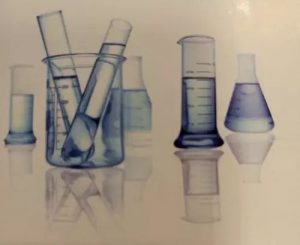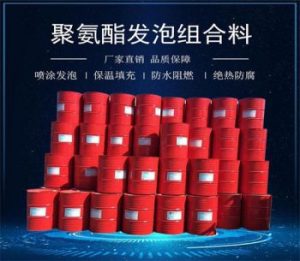Cobalt salt adhesion promoter
1. Overview
Cobalt salt adhesion promoter (hereinafter referred to as cobalt salt adhesive) series products are direct additive adhesives for high-strength bonding of rubber and metal. They are mainly used for steel wire radial tires, steel wire reinforced conveyor belts, steel braided rubber hoses and rubber Roller and other rubber products industry. Cobalt salt-type adhesives are not used in large amounts in rubber products, but they have a huge effect. They are important additives for rubber products with metal skeleton materials, and are also one of the most expensive additives among all additives. Since the cobalt salt adhesive does not participate in the chemical reaction during the bonding reaction, but only plays the role of adhesion promotion, that is, catalysis, the correct name should be cobalt salt adhesion promoter. Cobalt salt adhesives are fine chemical products. Due to their importance in rubber products, the formula design, manufacturing process, quality control and inspection process of this type of product need to be particularly meticulous to ensure superior performance and stable quality of the product. , in order to ensure that we can provide users with high-quality cobalt salt adhesive products.

two. The development history and current situation of cobalt salt adhesives
As early as the early 1940s, cobalt resinate and cobalt stearate had been used in the production of radial tires by Dunlop and other companies. Later, liquid cobalt naphthenate, which was used as a paint drier, was also used as a cobalt salt adhesive. agent. By the mid-1960s, people noticed that one of the raw materials for liquid cobalt naphthenate was natural naphthenic acid, and the composition of natural naphthenic acid was particularly complex. The naphthenic acid content was generally 70% to 80%. After refinement, The naphthenic acid content of PVC can only reach about 90%, and the other components are neutral oil, butter, asphalt and a small amount of esters. Its low-boiling part contains neutral oils such as diesel, and its high-boiling part (above 320°C) contains asphalt impurities as high as 15% to 30%. These impurities will cause swelling and damage to the rubber, which is unacceptable for rubber products, so High-purity solid cobalt naphthenate gradually replaced liquid cobalt naphthenate. In the 1980s, the British company “Manchem” launched a new series of cobalt salt adhesives called “Manobond”, a series of cobalt borate adhesives. In addition to its excellent adhesive properties, it also has the properties of resistance to hot oxygen and It is resistant to heat and humidity, salt water and slows down metal corrosion. It is favored by the international rubber industry and is recognized as a revolution in adhesive technology. In the early 1990s, the French company VAS-SET and the British company Manchem successively launched a replacement product of solid cobalt naphthenate, “cobalt decanoate” (Manobond 740C). This adhesive has excellent adhesive properties and anti-aging properties. All have new improvements and breakthroughs compared with solid cobalt naphthenate. The above varieties constitute a large series of cobalt salt adhesives. Cobalt salt bonding system, m-methyl-white bonding system, m-methyl-white-cobalt bonding system constitute the three major bonding systems in the rubber industry,
It is widely used in the rubber products industry.

Before the late 1980s, our country could not produce such products and relied entirely on imports from abroad. Imported products are expensive. Manobond 680C (cobalt acylate 23) is as high as RMB 480,000/ton, and Manobond 740C (cobalt decanoate) is also as high as RMB 420,000/ton. In order to realize the localization of such raw materials, the former State Planning Commission and the Ministry of Chemical Industry organized the national “Seventh Five-Year Plan” and “Eighth Five-Year Plan” key scientific and technological research. I was fortunate to serve as the leader of the public relations team, leading the team to successfully complete public relations tasks, etc. Effectively adopting foreign standards, we successfully developed the Manobond series of products and achieved the goal of localization. Forcing similar imported products from abroad to significantly reduce their prices. At present, the domestic production capacity of such adhesives can fully meet the needs of the domestic market, and it is imperative to realize the localization of cobalt salt adhesive raw materials. However, although there are more than ten large and small manufacturers of cobalt salt adhesives in China, except for a few manufacturers, most of their products are specious, and their formulation technology and equipment level are extremely low. It is impossible to guarantee the quality and level of the products, and it is impossible to match them. compete with similar foreign products.
three. Manufacturing of cobalt salt adhesive products
Cobalt salt adhesives include cobalt stearate, solid cobalt naphthenate, cobalt decanoate and cobalt borate (23, 16) and other varieties and brands, among which cobalt stearate, solid cobalt naphthenate, cobalt decanoate It is a cobalt diphosphate product with the schematic molecular structure formula: R1-Co-R2
In the formula: R is an organic acid radical, which can be a single organic acid radical or a mixed organic acid radical composed of several organic acids. Boronr />
③Distinguish from the melting point
Cobalt diphosphate products are amorphous substances, and their test indicators have a softening point. Cobalt borate is not an amorphous substance. It does not have a softening point, but it does not have a constant melting point like typical crystalline substances such as metals. Cobalt borate is a crystalline substance with a relatively concentrated melting point area. The melting point areas of good cobalt borate 23 and 16 products measured by a microscopic melting point instrument are around 120°C and 110°C respectively. . A product with a melting point that is too high reflects that the reaction of the product is not complete enough and the dispersibility is poor when used; a product with a melting point that is too low may indicate that the product is a mixture of cobalt diphosphate and other organic and inorganic cobalt salts. Not a uniform cobalt boroacylate product.
For cobalt diphosphate products, in addition to melting point inspection, also refer to the above method for inspection and judgment